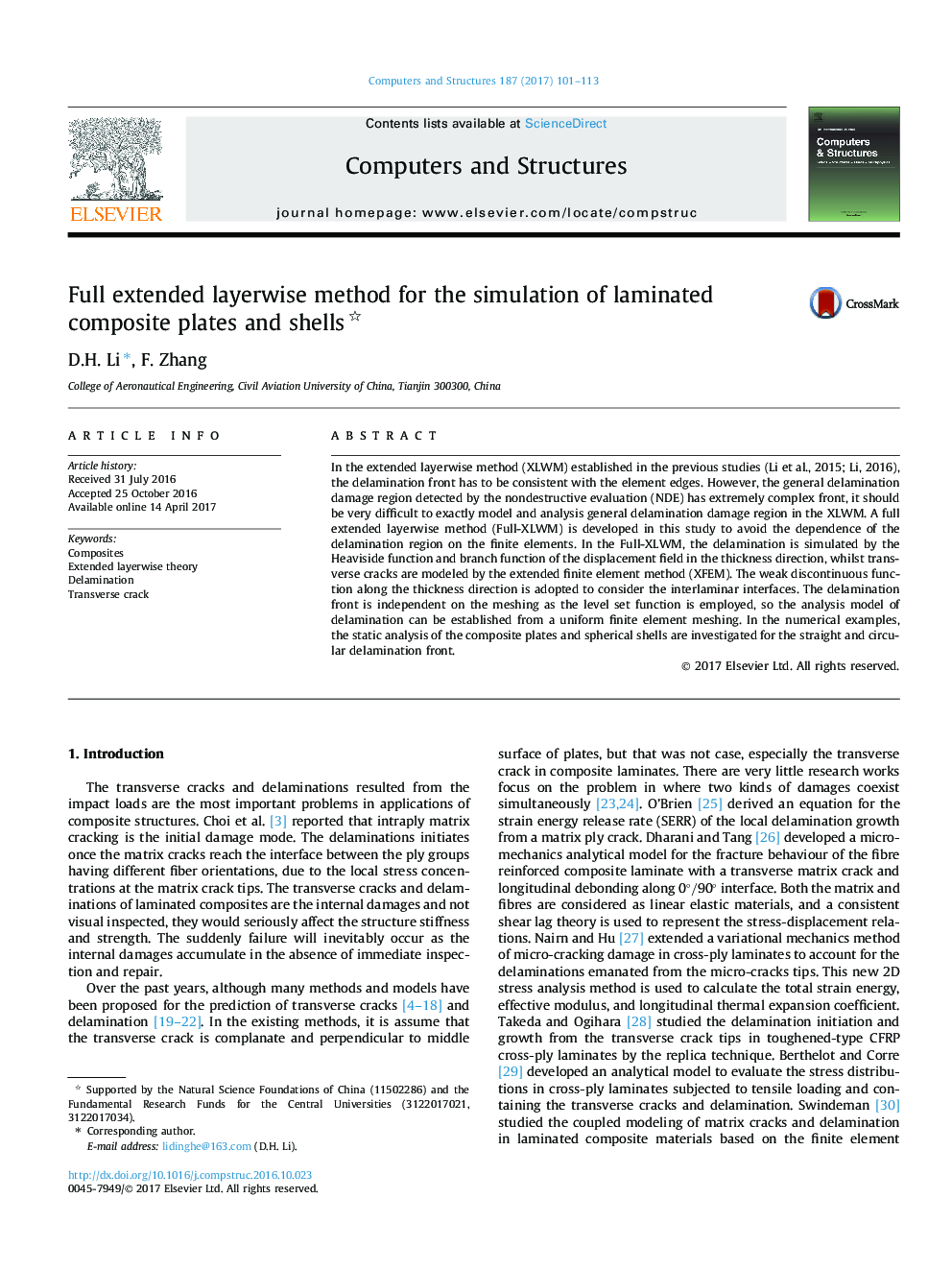| Article ID | Journal | Published Year | Pages | File Type |
|---|---|---|---|---|
| 4965709 | Computers & Structures | 2017 | 13 Pages |
Abstract
In the extended layerwise method (XLWM) established in the previous studies (Li et al., 2015; Li, 2016), the delamination front has to be consistent with the element edges. However, the general delamination damage region detected by the nondestructive evaluation (NDE) has extremely complex front, it should be very difficult to exactly model and analysis general delamination damage region in the XLWM. A full extended layerwise method (Full-XLWM) is developed in this study to avoid the dependence of the delamination region on the finite elements. In the Full-XLWM, the delamination is simulated by the Heaviside function and branch function of the displacement field in the thickness direction, whilst transverse cracks are modeled by the extended finite element method (XFEM). The weak discontinuous function along the thickness direction is adopted to consider the interlaminar interfaces. The delamination front is independent on the meshing as the level set function is employed, so the analysis model of delamination can be established from a uniform finite element meshing. In the numerical examples, the static analysis of the composite plates and spherical shells are investigated for the straight and circular delamination front.
Related Topics
Physical Sciences and Engineering
Computer Science
Computer Science Applications
Authors
D.H. Li, F. Zhang,
